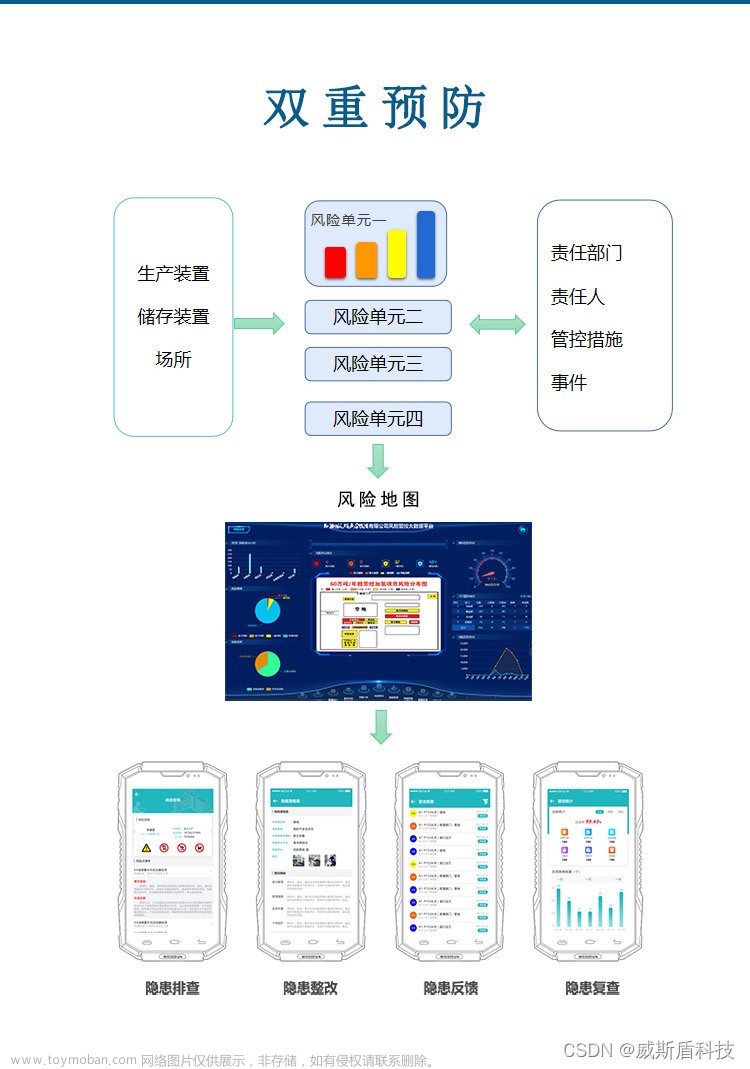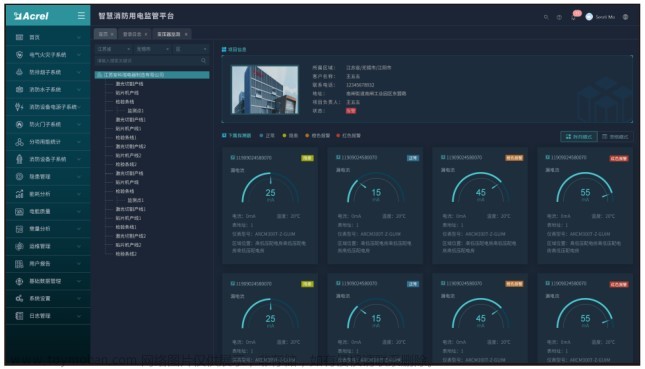一.Spring Security快速⼊⻔
1.添加security启动器
<!-- Spring Security 提供的安全管理依赖启动器 --><dependency><groupId> org.springframework.boot </groupId><artifactId> spring-boot-starter-security </artifactId></dependency>
项⽬启动测试

这种默认安全管理⽅式存在诸多问题。例如,只有唯⼀的默认登录⽤户user,密码随机⽣成且过于暴露、登录⻚⾯ 及错误提示⻚⾯不是我们想要的等。
1.MVC Security安全配置介绍
1.下⾯我们通过Spring Security API查看WebSecurityConfigurerAdapter的主要⽅法,具体如下表
@EnableWebSecurity // 开启MVC Security安全⽀持
public class SecurityConfig extends WebSecurityConfigurerAdapter {
//定制基于HTTP请求的⽤户访问控制
@Override
protected void configure(HttpSecurity http) throws Exception {
super.configure(http);
}
//定制⽤户认证管理器来实现⽤户认证
@Override
protected void configure(AuthenticationManagerBuilder auth) throws Exception {
super.configure(auth);
}
}4 ⾃定义⽤户认证
1.In-Memory Authentication:内存身份认证
2.JDBC Authentication:JDBC身份认证
3.UserDetailsService:身份详情服务
4.LDAP Authentication:LDAP身份认证
5.AuthenticationProvider:身份认证提供商
4.1.2 使⽤内存进⾏身份认证 写一个配置类即可
package com.cy.config;
import
org.springframework.security.config.annotation.authentication.builders.AuthenticationMa
nagerBuilder;
import
org.springframework.security.config.annotation.web.configuration.EnableWebSecurity;
import
org.springframework.security.config.annotation.web.configuration.WebSecurityConfigurerA
dapter;
import org.springframework.security.crypto.bcrypt.BCryptPasswordEncoder;
/**
* MVC Security管理配置的⾃定义WebSecurityConfigurerAdapter类
*/
@EnableWebSecurity // 开启MVC Security安全⽀持
public class SecurityConfig extends WebSecurityConfigurerAdapter {
/** ⽤户身份认证⾃定义配置 */
@Override
protected void configure(AuthenticationManagerBuilder auth) throws Exception {
// 密码需要设置编码器
BCryptPasswordEncoder encoder = new BCryptPasswordEncoder();
// 1.使⽤内存⽤户信息,作为测试使⽤(设置⽤户名、密码和⻆⾊)
auth.inMemoryAuthentication().passwordEncoder(encoder)
.withUser("tom").password(encoder.encode("123456")).roles("common")
.and()
.withUser("李四").password(encoder.encode("123456")).roles("vip");
}
}4.3 UserDetailsService身份认证
1.1.在项⽬的pom.xml⽂件中添加Mybaits依赖启动器和lombok依赖。
<dependency> <groupId>com.baomidou</groupId> <artifactId>mybatis-plus-boot-starter</artifactId> <version>3.5.2</version> </dependency><dependency><groupId> org.projectlombok </groupId><artifactId> lombok </artifactId></dependency>
package com.example.demo.service.imp;
import com.example.demo.pojo.Authority;
import com.example.demo.pojo.Customer;
import com.example.demo.service.CustomerService;
import org.springframework.beans.factory.annotation.Autowired;
import org.springframework.security.core.authority.SimpleGrantedAuthority;
import org.springframework.security.core.userdetails.User;
import org.springframework.security.core.userdetails.UserDetails;
import org.springframework.security.core.userdetails.UserDetailsService;
import org.springframework.security.core.userdetails.UsernameNotFoundException;
import org.springframework.stereotype.Service;
import java.util.List;
import java.util.stream.Collectors;
/** ⾃定义⼀个UserDetailsService接⼝实现类进⾏⽤户认证信息封装 */
@Service
public class UserDetailsServiceImpl implements UserDetailsService {
@Autowired
/* 内有提供自定义用户查询和权限查询的方法
* getCustomer 根据名字查询用户信息 的方法
*
* getCustomerAuthority 根据名字查询用户权限 的方法
* */
private CustomerService customerService;
@Override
public UserDetails loadUserByUsername(String username) throws
UsernameNotFoundException {
// 通过业务⽅法获取⽤户及权限信息
Customer customer = customerService.getCustomer(username);
List<Authority> authorities = customerService.getCustomerAuthority(username);
// 对⽤户权限进⾏封装
List<SimpleGrantedAuthority> list = authorities.stream().map(authority -> new
SimpleGrantedAuthority(authority.getAuthority())).collect(Collectors.toList());
// 返回封装的UserDetails⽤户详情类
if (customer != null) {
UserDetails userDetails = new User(customer.getUsername(),
customer.getPassword(), list);
return userDetails;
} else {
// 如果查询的⽤户不存在(⽤户名不存在),必须抛出此异常
throw new UsernameNotFoundException("当前⽤户不存在!");
}}}package com.example.demo.config;
import org.springframework.beans.factory.annotation.Autowired;
import org.springframework.context.annotation.Bean;
import org.springframework.security.config.annotation.authentication.builders.AuthenticationManagerBuilder;
import org.springframework.security.config.annotation.web.WebSecurityConfigurer;
import org.springframework.security.config.annotation.web.builders.HttpSecurity;
import org.springframework.security.config.annotation.web.configuration.EnableWebSecurity;
import org.springframework.security.config.annotation.web.configuration.WebSecurityConfigurerAdapter;
import org.springframework.security.core.userdetails.UserDetailsService;
import org.springframework.security.crypto.bcrypt.BCryptPasswordEncoder;
import org.springframework.security.web.authentication.rememberme.JdbcTokenRepositoryImpl;
import javax.sql.DataSource;
import java.util.Date;
import java.util.HashMap;
//开启安全管理的支持
@EnableWebSecurity
public class SecurityConfig extends WebSecurityConfigurerAdapter {
@Autowired //Hikari连接池,自动将mysql配置信息加载连接池对象上
private DataSource dataSource;
//1.用户身份认证的配置
@Autowired
private UserDetailsService userDetailsService;
@Override
protected void configure(HttpSecurity http) throws Exception {
http.authorizeRequests() // 开启基于HttpServletRequest请求访问的限制
.antMatchers("/").permitAll() // 开启Ant⻛格的路径匹配。⽆条件对请求进⾏放⾏
.antMatchers("/login/**").permitAll()
.antMatchers("/detail/common/**").hasRole("common") // 匹配⽤户是否有某⼀个⻆⾊
.antMatchers("/detail/vip/**").hasRole("vip")
.anyRequest().authenticated()// 匹配任何请求。匹配已经登录认证的⽤户
.and() // 功能连接符
.formLogin(); // 开启基于表单的⽤户登录
http.formLogin() // 开启基于表单的⽤户登录
// ⽤户登录⻚⾯跳转路径,默认为get请求的/login。⽆条件对请求进⾏放⾏
.loginPage("/userLogin").permitAll()
.usernameParameter("name") // 登录⽤户的⽤户名参数, 默认为username
.passwordParameter("pwd") // 登录⽤户的密码参数,默认为password
.defaultSuccessUrl("/") // ⽤户直接登录后默认跳转地址
.failureUrl("/userLogin?error"); // ⽤户登录失败后的跳转地址,默认为/login?erro
// ⾃定义⽤户退出控制
http.logout()
.logoutUrl("/mylogout")
.logoutSuccessUrl("/");
// 定制Remember-me记住我功能
http.rememberMe()
.rememberMeParameter("rememberme")
.tokenValiditySeconds(200)
// 对Cookie信息进⾏持久化管理
.tokenRepository(tokenRepository());
}
@Bean
/** 持久化Token存储 */
public JdbcTokenRepositoryImpl tokenRepository() {
JdbcTokenRepositoryImpl jti = new JdbcTokenRepositoryImpl();
jti.setDataSource(dataSource);
//自动创建数据库表字段
jti.setCreateTableOnStartup(true);
return jti;
}
@Override
protected void configure(AuthenticationManagerBuilder auth) throws Exception {
// 密码需要设置编码器
BCryptPasswordEncoder encoder = new BCryptPasswordEncoder();
auth.userDetailsService(userDetailsService).passwordEncoder(encoder);
}
}
完成以上配置基于内存进⾏身份认证 就结束了
接下来是配置的信息文章来源:https://www.toymoban.com/news/detail-742168.html
| 方法 | 描述 |
|---|---|
| authorizeRequests() | 开启基于HttpServletRequest请求访问的限制 |
| formLogin() | 开启基于表单的⽤户登录 |
| httpBasic() | 开启基于HTTP请求的Basic认证登录 |
| logout() | 开启退出登录的⽀持 |
| sessionManagement() | 开启Session管理配置 |
| rememberMe() | 开启记住我功能 |
| csrf() | 配置CSRF跨站请求伪造防护功能 |
|
⽅法
|
描述
|
|---|---|
|
antMatchers(java.lang.String... antPtterns)
|
开启
Ant
⻛格的路径匹配
|
|
mvcMatchers(java.lang.String... patterns)
|
开启
MVC
⻛格的路径匹配(与
Ant
⻛格类似)
|
|
regexMatchers(java.lang.Sring...
regexPatterns)
|
开启正则表达式的路径匹配
|
|
and()
|
功能连接符
|
|
anyRequest()
|
匹配任何请求
|
|
rememberMe()
|
开启记住我功能
|
|
access(String attribute)
|
匹配给定的
SpEL
表达式计算结果是否为
true
|
|
hasAnyRole(String... roles)
|
匹配⽤户是否有参数中的任意⻆⾊
|
|
hasRole(Sring role)
|
匹配⽤户是否有某⼀个⻆⾊
|
|
hasAnyAuthority(String... authorities)
|
匹配⽤户是否有参数中的任意权限
|
|
hasAuthority(String authority)
|
匹配⽤户是否有某⼀个权限
|
|
authenticated()
|
匹配已经登录认证的⽤户
|
|
fullyAuthenticated()
|
匹配完整登录认证的⽤户(⾮
rememberMe
登录⽤ 户)
|
|
hasIpAddress(String ipAddressExpression)
|
匹配某
IP
地址的访问请求
|
|
permitAll()
|
⽆条件对请求进⾏放⾏
|
|
⽅法
|
描述
|
|---|---|
|
loginPage(String loginPage)
|
⽤户登录⻚⾯跳转路径,默认为
get
请 求的/login
|
|
successForwardUrl(String forwardUrl)
|
⽤户登录成功后的重定向地址
|
|
successHandler(AuthenticationSuccessHandler
authenticationSuccessHandler)
|
⽤户登录成功后的处理
|
|
defaultSuccessUrl(String defaultSuccessUrl)
|
⽤户直接登录后默认跳转地址
|
|
failureForwardUrl(String forwardUrl)
|
⽤户登录失败后的重定向地址
|
|
failureUrl(String authenticationFailureUrl)
|
⽤户登录失败后的跳转地址,默认
为
/login?error
|
|
failureHandler(AuthenticationFailureHandler
authenticationFailureHandler)
|
⽤户登录失败后的错误处理
|
|
usernameParameter(String usernameParameter)
|
登录⽤户的⽤户名参数, 默认为
username
|
|
passwordParameter(String passwordParameter)
|
登录⽤户的密码参数,默认为
password
|
|
loginProcessingUrl(String loginProcessingUrl)
|
登录表单提交的路径,默认为
post
请
求的
/login
|
|
permitAll()
|
permitAll()
⽆条件对请求进⾏放⾏
|
|
⽅法
|
描述
|
|---|---|
|
rememberMeParameter(String rememberMeParameter)
|
指示在登录时记住⽤户的
HTTP
参数
|
|
key(String key)
|
记住我认证⽣成的
Token
令牌标识
|
|
tokenValiditySeconds(int tokenValiditySeconds)
|
记住我
Token
令牌有效期,单位为秒
|
|
tokenRepository(PersistentTokenRepository
tokenRepository)
|
指定要使⽤的
PersistentTokenRepository
,⽤来配置持久化
Token
令牌
|
|
alwaysRemember(boolean alwaysRemember)
|
是否应该始终创建记住我
Cookie
,默认为
false
|
|
clearAuthentication(boolean clearAuthentication)
|
是否设置
Cookie
为安全的,如果设置为
true
,则必须通过
HTTPS
进⾏连接请 求
|
|
⽅法
|
描述
|
|---|---|
|
disable()
|
关闭
Security
默认开启的
CSRF
防御功能
|
|
csrfTokenRepository(CsrfTokenRepository
csrfTokenRepository)
|
指定要使⽤的
CsrfTokenRepository
(
Token
令牌持久化仓库)。默认是由
LazyCsrfTokenRepository
包装的
HttpSessionCsrfTokenRepository
|
|
requireCsrfProtectionMatcher(RequestMatcher
requireCsrfProtectionMatcher)
|
指定针对什么类型的请求应⽤
CSRF
防护功能。默认设置是忽略
GET
、
HEAD
、
TRACE
和
OPTIONS
请
求,⽽处理并防御其他所有请求
|
以上就是一些比较常用的配置信息文章来源地址https://www.toymoban.com/news/detail-742168.html
到了这里,关于Spring Boot安全管理的文章就介绍完了。如果您还想了解更多内容,请在右上角搜索TOY模板网以前的文章或继续浏览下面的相关文章,希望大家以后多多支持TOY模板网!












